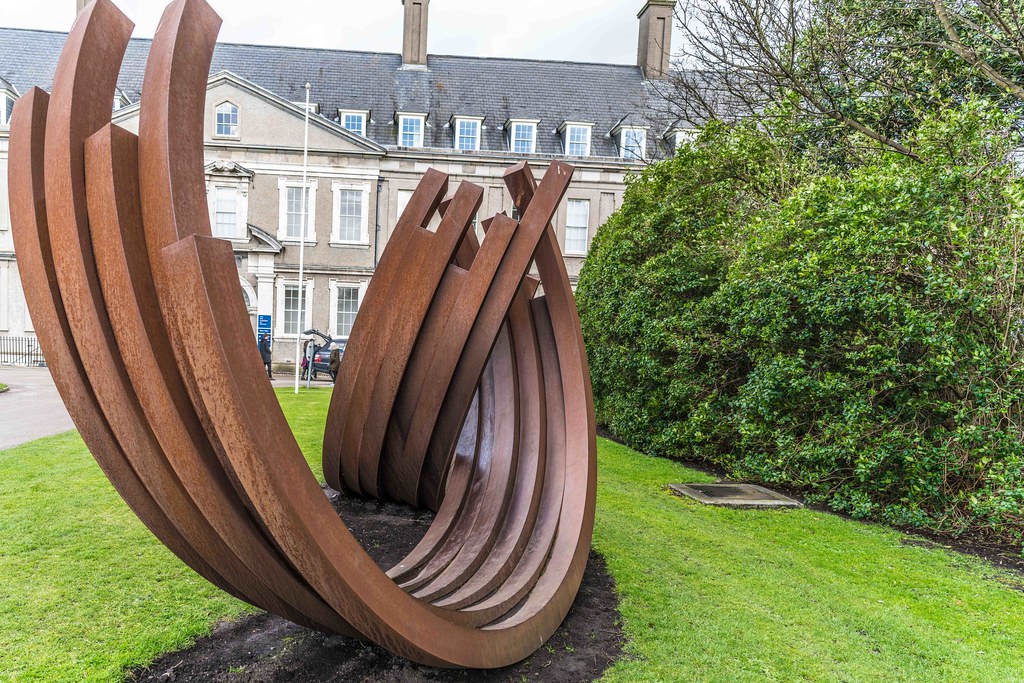Weathering steel is a collection of steel alloys that are commonly used in the construction of outdoor structures. These structures are likely to face environmental impact, but the use of weathering steels helps to protect them by forming a layer. This self-protecting layer continuously replaces itself and reduces the need to add extra layers to the structures. In this blog post, we will look at what new uses there are for weathering steel and the advantages this provides.
What is Weathering Steel?
Often known by its trademark COR-TENTM (or Corten), weathering steel is a high-strength, low-carbon steel that was designed and manufactured by U.S. Steel in the 1930s. The key property of weathering steel is that its design allows rust to form on the outer layer of the structure but does not penetrate further into the secondary layers. The protective layer is formed when the steel is exposed to moisture and other atmospheric conditions and begins to rust. However, because of the alloy composition, it rusts slowly1. When the outer layer has rust, the steel ionizes and will not rust further.
As a result, a protective coating is formed around the steel, preventing corrosion and other environmental damage. It also means that additional layers are not required, which saves time and money.

What Are the New Uses for Weathering Steel?
Weathering steel is often an ideal solution for its corrosion-resistance properties and aesthetics of steel structures. It is favourable for sculptures and art projects because the rust changes colour as it ages. Still, it also has structural benefits in buildings, bridges and railways, as well as domestic gardens, external wall panels, fences and gates.
There are several crucial advantages to using weathering steel for outdoor construction, with the key point being that this design has overcome the problems that rust causes. It has outstanding levels of tensile strength and weather resistance and is an economical option because coating and re-coating costs are eliminated or heavily reduced. Other benefits of weathering steel include good weldability and workability, which can be subjected to both hot and cold working.
Masteel and Weathering Steel
Masteel can provide an extensive range of weathering, or Corten, steel. Our Corten steel grades are available in Corten A, Corten B, S355JOWP and S355J2W, each of which has specific properties and preferred applications. We offer weathering steel in a variety of plate widths and thicknesses that are accurately cut and profiled ‘in-house.’ Below, we outline four major weathering steels available with Masteel.
The protective layer of Corten steel regenerates itself as it reacts to pollutants in the air and therefore makes it an excellent choice for an economical and durable material. However, depending on your application, you may find a specific grade that is more suitable.
Corten A
Corten A is manufactured with copper, chromium, nickel and phosphorous. It is typically used for aesthetic purposes and gas flue applications but is not suitable for heavy load-bearing purposes. As mentioned, this steel is low to no maintenance and is often chosen because of the rust’s visual effect.
Corten B
Corten B is the more common choice for load-bearing applications. Not only is it cost-effective, but the protective layer that forms prevents further rust and other damage, making it extremely low maintenance.
S355JOWP
Often referred to as an atmospheric corrosion-resistant steel, S355JOWP is an equivalent grade to Corten A. It is often used in gas applications, sculptures and sculpted buildings because of its aesthetically pleasing look.
S355J2W
S355J2W is an equivalent grade to Corten B and is also a weathering steel. It is used in structures that use thin materials, heavy structures and low-temperature working environments. Like the other weathering steels, it is a cost-effective, low-maintenance option that provides numerous benefits.
If you want to purchase weathering steel or require any further information, contact us today and we can help.
